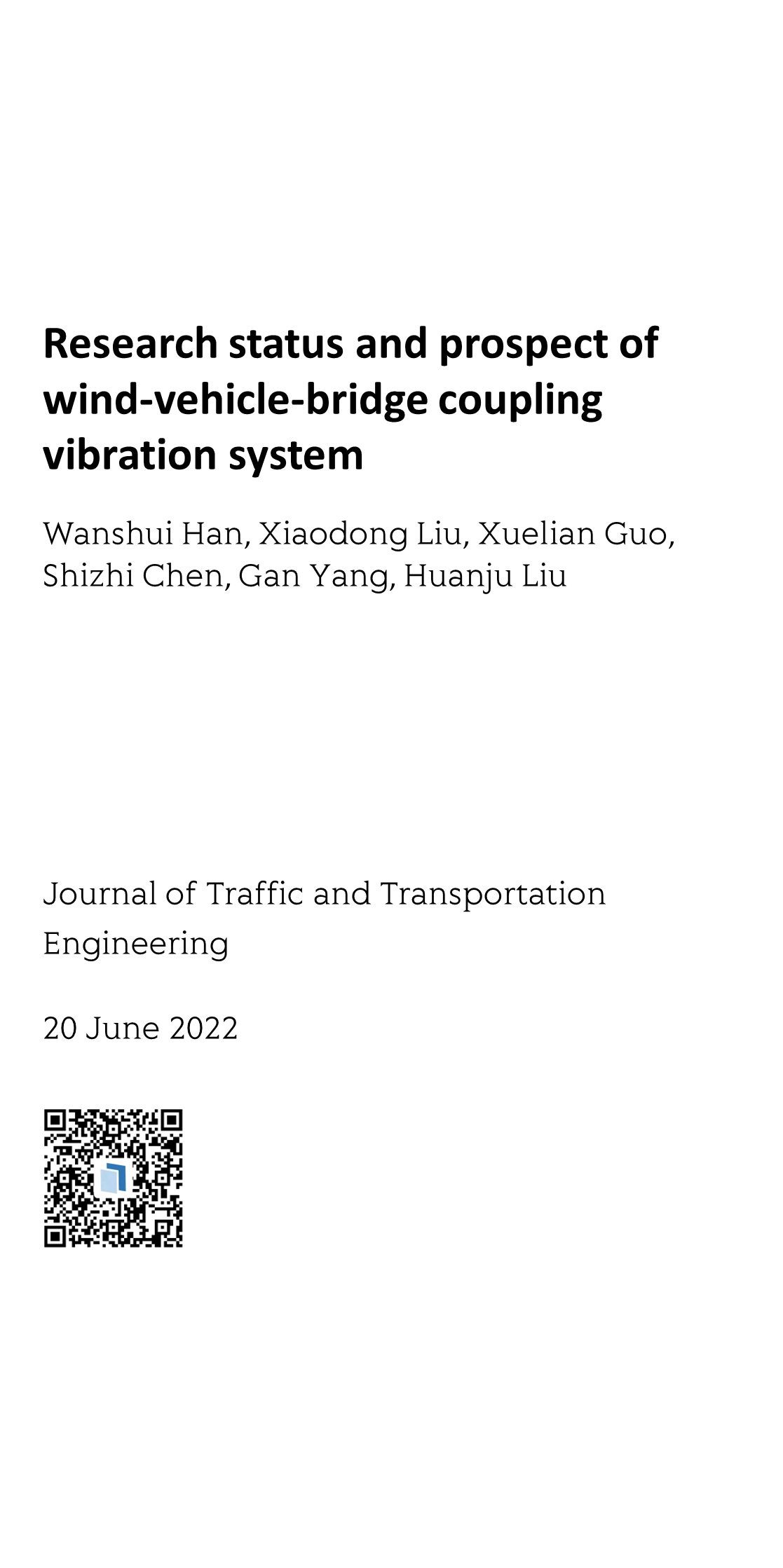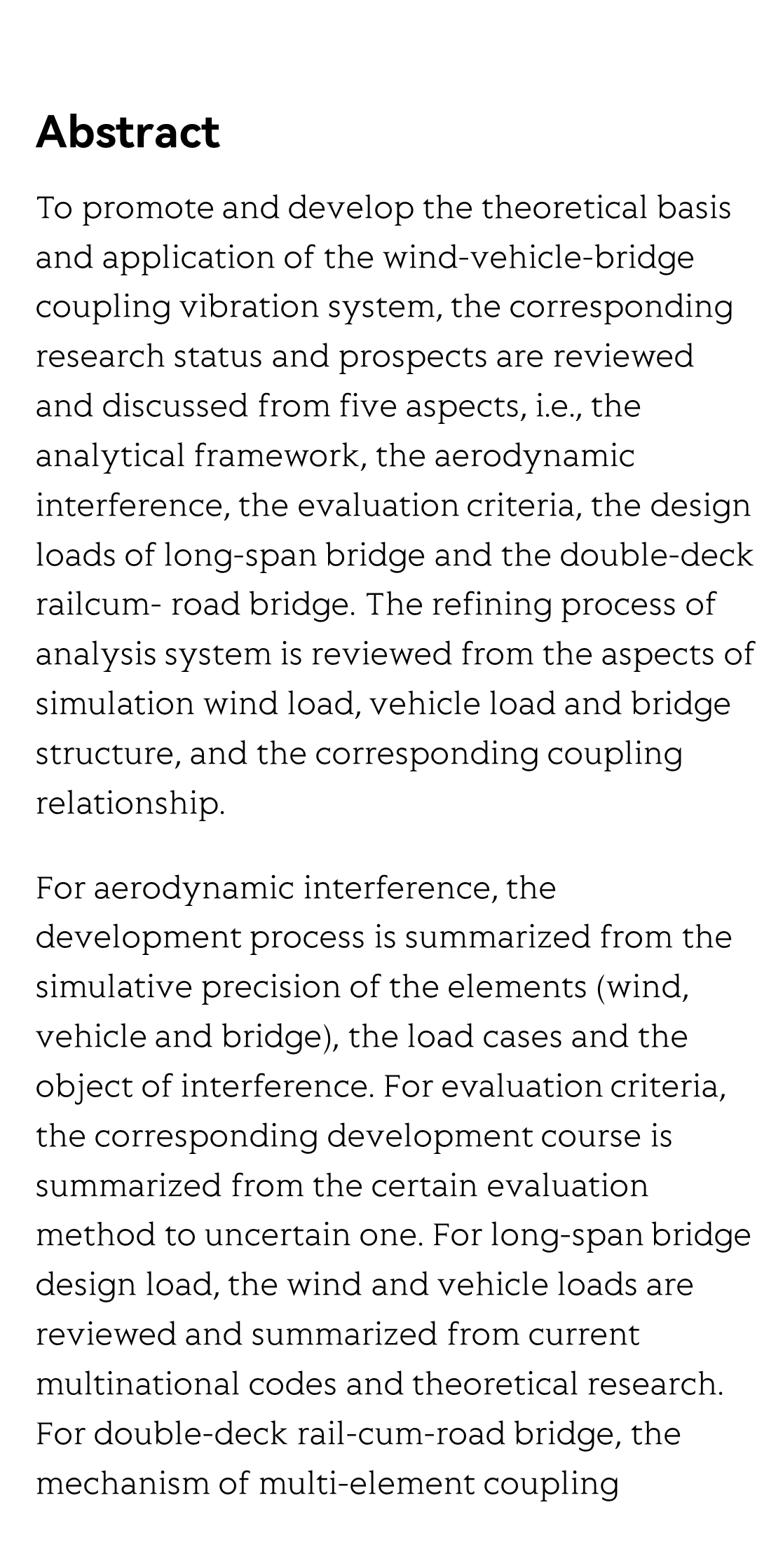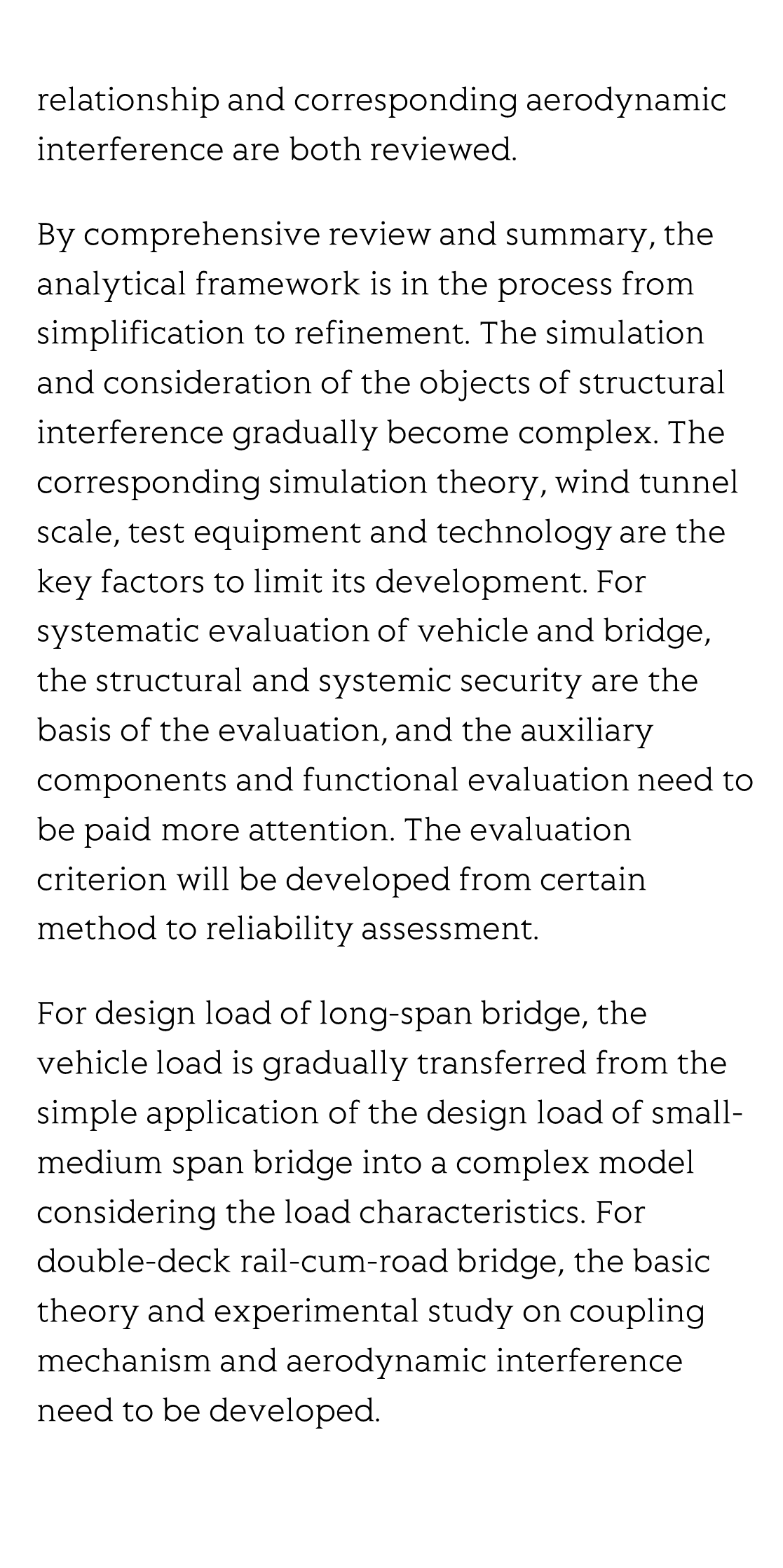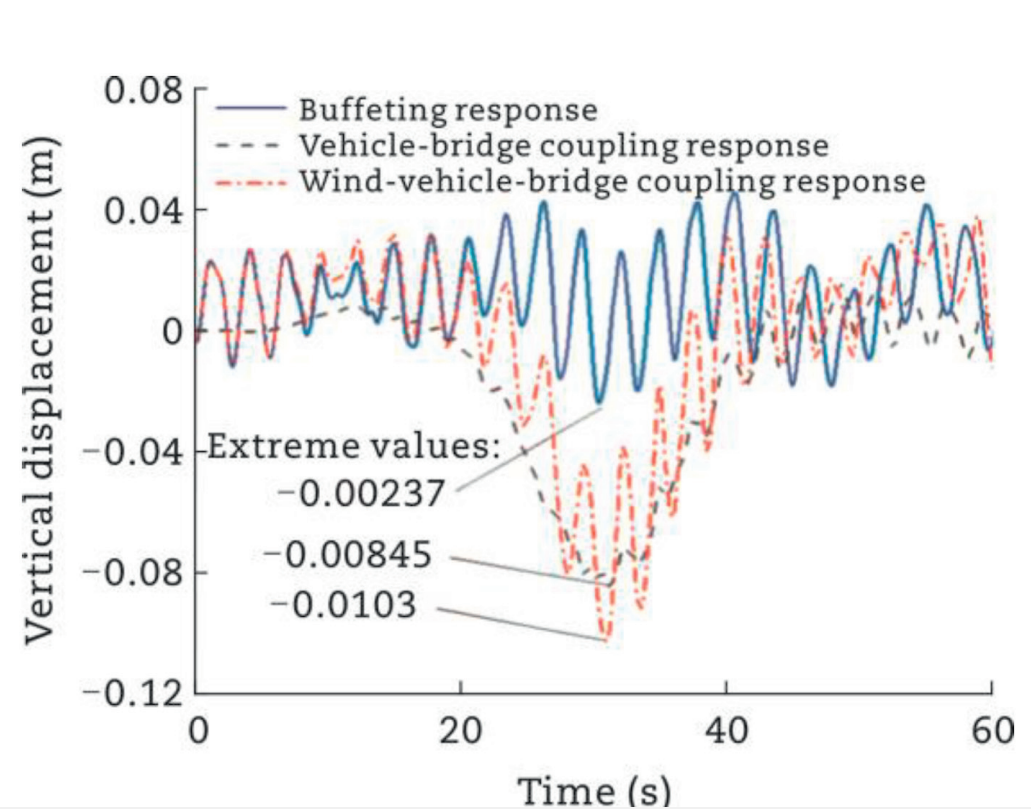(Peer-Reviewed) Research status and prospect of wind-vehicle-bridge coupling vibration system
Wanshui Han 韩万水 ¹, Xiaodong Liu 刘晓东 ¹, Xuelian Guo ¹, Shizhi Chen 陈适之 ², Gan Yang 杨干 ¹, Huanju Liu 刘焕举 ³
¹ School of Highway, Chang'an University, Xi'an 710064, China
中国 西安 长安大学公路学院
² Department of Civil and Environment Engineering, University of California, Los Angeles, CA 90015, USA
³ School of Civil Engineering, Hebei University of Engineering, Handan 056038, China
中国 邯郸 河北工程大学土木工程学院
Abstract
To promote and develop the theoretical basis and application of the wind-vehicle-bridge coupling vibration system, the corresponding research status and prospects are reviewed and discussed from five aspects, i.e., the analytical framework, the aerodynamic interference, the evaluation criteria, the design loads of long-span bridge and the double-deck railcum- road bridge. The refining process of analysis system is reviewed from the aspects of simulation wind load, vehicle load and bridge structure, and the corresponding coupling relationship.
For aerodynamic interference, the development process is summarized from the simulative precision of the elements (wind, vehicle and bridge), the load cases and the object of interference. For evaluation criteria, the corresponding development course is summarized from the certain evaluation method to uncertain one. For long-span bridge design load, the wind and vehicle loads are reviewed and summarized from current multinational codes and theoretical research. For double-deck rail-cum-road bridge, the mechanism of multi-element coupling relationship and corresponding aerodynamic interference are both reviewed.
By comprehensive review and summary, the analytical framework is in the process from simplification to refinement. The simulation and consideration of the objects of structural interference gradually become complex. The corresponding simulation theory, wind tunnel scale, test equipment and technology are the key factors to limit its development. For systematic evaluation of vehicle and bridge, the structural and systemic security are the basis of the evaluation, and the auxiliary components and functional evaluation need to be paid more attention. The evaluation criterion will be developed from certain method to reliability assessment.
For design load of long-span bridge, the vehicle load is gradually transferred from the simple application of the design load of small-medium span bridge into a complex model considering the load characteristics. For double-deck rail-cum-road bridge, the basic theory and experimental study on coupling mechanism and aerodynamic interference need to be developed.
Data-driven polarimetric imaging: a review
Kui Yang, Fei Liu, Shiyang Liang, Meng Xiang, Pingli Han, Jinpeng Liu, Xue Dong, Yi Wei, Bingjian Wang, Koichi Shimizu, Xiaopeng Shao
Opto-Electronic Science
2024-02-24







